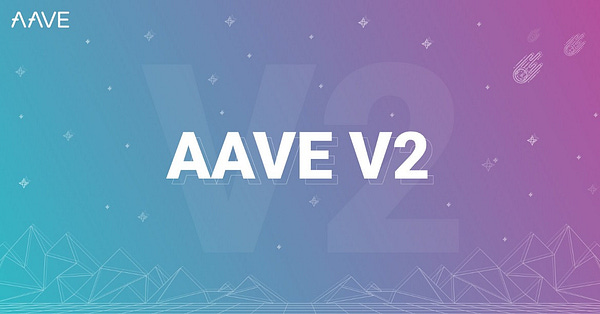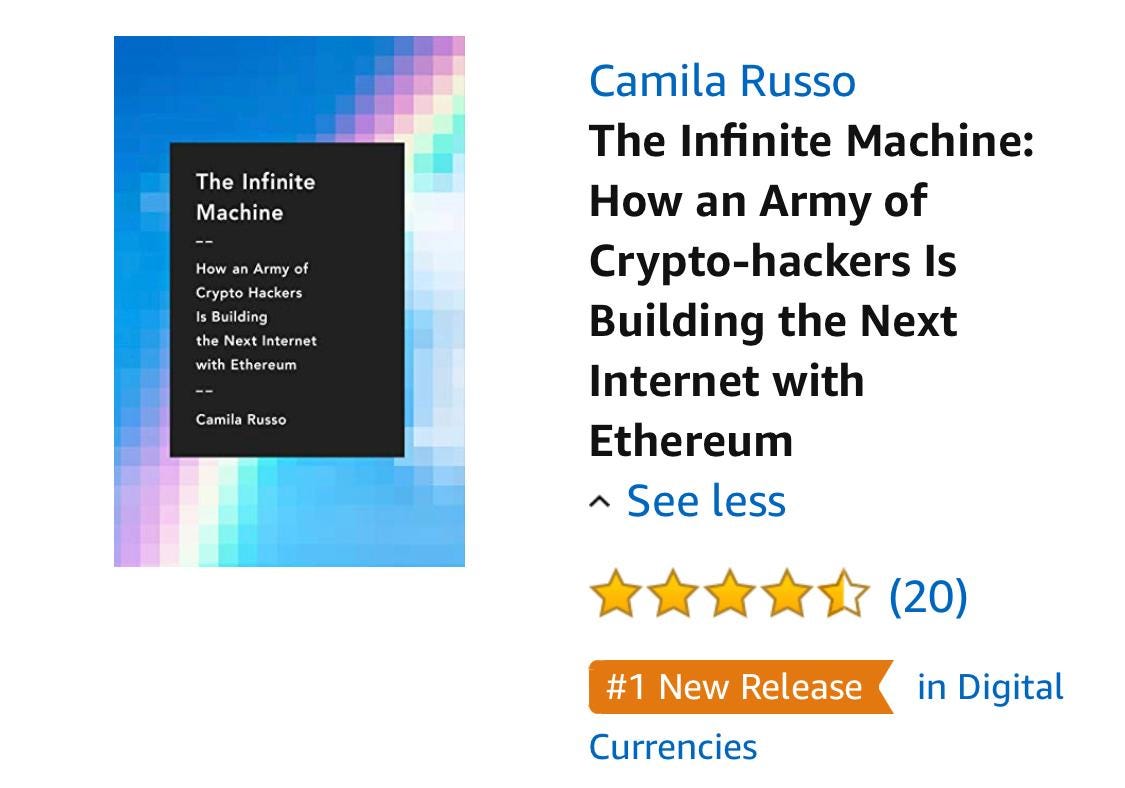Curve Assets Soar Over $1B After One of Crypto's Strangest Token Launches
Also, Aave's V2 launch, the latest AMM to join the party, and Andre Cronje's new project.
Hello Defiers! Here’s what’s going on in decentralized finance:
Four days after CRV launch, assets in Curve Finance soar over $1B
Aave becomes DeFi’s second-largest protocol after V2 announcement
There’s a new contender in the AMM race
And more :)
The open economy is taking over the old one. Subscribe to keep up with this revolution. Click here to pay with DAI (for 70 Dai/yr vs $100/yr).
📺 Also, The Defiant’s YouTube Channel Launched! Subscribe!
🎙Listen to this week’s podcast episode with Alex Masmej here:

🙌 Together with Zapper, the ultimate hub for managing DeFi assets & liabilities.


A Curvey Rollercoaster
From an anonymous account deploying the smart contracts to a fully diluted valuation of $175B and now over $1B in Total Value Locked, Curve’s native governance token launch has been an absolute rollercoaster.
The DeFi community had been impatiently waiting for the launch of Curve Finance’s CRV token all last week, until they just couldn’t wait any longer —literally.
On Thursday evening, 0xChad —who the Curve team says it’s not associated with— took the liberty of spending $8,000 in gas to deploy Curve’s publicly viewable contracts, kickstarting one of the most controversial launches in DeFi’s history.


As the community scrambled to figure out whether or not the token could be trusted, and theories on whether it was all an inside job were flung about, hungry farmers blindly tossed capital into the contracts to accumulate ~80,000 CRV before the official front-end was deployed.


The Curve team said the code and admin keys were correct, and decided to just go with it.
“We had no choice but to adopt it. The launch has happened,” they tweeted.
$1B Milestone
With that, $500M in liquidity raced into the protocol over the first 24 hours and has kept flowing in, pushing total assets to over $1B, only the third DeFi platform to reach the milestone.

Assets in Curve. Image source: DeFi Pulse
Binance and Poloniex immediately listed CRV, while Matcha’s front-end broke due to too much traffic.
Minting CRV
Curve’s Minter interface allows anyone to earn CRV for locking one of their seven liquidity pool positions in ‘Gauges’.
“Some pools have different weights which means they will receive more CRV for every dollar in liquidity provided. On top of this, each gauge type also can have different weights,” according to a post on Curve’s website.
Of the 2M CRV which enters circulation each day, roughly 766k tokens are earned by liquidity providers. Team, investor and early LP’s tokens unlock in real-time, with LPs being able to claim CRV directly from the Vesting portal.

Curve farmers can also earn CRV via yEarn’s yVaults which are designed to sell tokens every time the contracts are called. This has resulted in nearly 15,000 CRV harvested and shared with yCRV liquidity providers since launch.

Amount of CRV harvested per day. Source: Dune Analytics
Declining APY
Curve’s homepage displays which pools are netting the highest APY at any given time. Returns soared to as high as 5,000% as CRV traded at $50, but have continually declined as yield farmers immediately sell tokens to maximize ROI. CRV is now trading at just over $4.

CRV has continually dropped since its exuberant listing just 4 days ago.

2.5x Multiplier
Still, Curve farmers remain optimistic. Starting on Aug. 28, liquidity providers can lock tokens in the Curve DAO for up to four years in exchange for a 2.5x multiplier on their rewards.
The yEarn community is now signaling how one of the largest yVaults participates in this system, with current votes signaling that yEarn’s vested CRV (worth roughly $3.5M) be used to enhance rewards and contribute to future governance.

While the liquidity mining distribution has yet to be tested in the long-term, it’s clear that yield farming has taken center stage when it comes to aggregating liquidity from traders, funds and major exchanges alike.
And not all traders are as reckless as CRV’s launch would make you believe: Nexus Mutual has now issued its largest cover position including a $2.2M cover on Curve signaling the building blocks of DeFi are being put to the test.



Assets in Aave Cross $1B After V2 Announcement
Aave launched version two of its money market protocol to testnet on Friday, pushing total value locked in the system to spike to $1.15B, and LEND, its native token, to soar by more than 30%.


With its new features, Aave seeks to provide end-users with more options to easily manage their finances, reducing the number of steps required, and adding new markets.
Single Transaction
Borrowers will be able to repay their debt using part of their collateral in a single transaction, instead of having to withdraw part of the collateral, purchase the borrowed asset, repay and unlock the rest of the collateral. They will also be able to trade their debt position; for example, a user could change their DAI for USDC if USDC was cheaper at a given moment.
Borrowers' debt positions will be tokenized, meaning that they will receive tokens representing their debt. By being tokenized, debt positions can be used to delegate credit to other users within Aave. Borrowers will also have access to margin trading.
Private Markets
With the launch of private markets, Aave is also targeting institutional players that might have an appetite for DeFi but don't know where to start. The protocol will allow the creation of markets that support tokenized assets of different types, such as mortgages in partnership with RealT, in a similar strategy to MakerDAO's, which is also looking to expand its basket of assets.
Delegated Voting
Aave has also introduced new tools to reduce friction to its governance system. Users can delegate their voting power to protocol politicians (and remove the voting power whenever wanted), and the ability to vote using cold wallets.
The money protocol has also managed to reduce gas costs by introducing a series of upgrades, for example, integrating the EIP2612 to their aTokens for gasless approvals.
Finally, Aave will use part of its Aave Ecosystem Reserve (which will have 3M Aave) to introduce its community's liquidity mining incentives. The incentives will be determined by Aave's governance and have not started to be distributed yet, but a proposal to incentivize stakers participating in Nexus Mutual to secure the protocol is already being discussed.
DODO Joins AMM Party With Flexible Pricing Structure
The race for the best DEX is getting a new contender. DODO is an automated market maker, which responds to changing markets and liquidity conditions.
The biggest flaw of AMMs like Uniswap and Balancer is that they allocate funds uniformly across the price range, which means only funds allocated near the market price are being utilized effectively, DODO founder Diane Dai wrote in a blog post.
DODO’s Proactive Market Maker has the goal of mimicking the behaviors of human market makers, efficiently allocating funds near the market price. As the market price changes, PMM proactively shifts the price curve in the same direction to ensure that the section of the curve that’s near the market price remains flat.

Image source: DODO’s Medium
DODO “pre-launched” on Aug. 15, with only the ETH/USDC trading pair will be available, and a US$1 million token pool has been allocated for both ETH and USDC.
Andre Cronje to Launch Decentralized Insurance
yEarn’s Andre Cronje today announced he plans to release “a new kind of tokenized insurance,” called yinsure.finance.
Token holders will be able to insure their asset by depositing them in a vault, and get a derivative of the token in exchange (for example yiUSDT for USDT deposits). They’ll be subject to a 0.1% initiation fee and each week, an additional 0.01% fee will be deducted. Insurers provide liquidity to the vaults and earn fees paid out by users. Should a claim be approved, their liquidity gets deducted and paid out to the claimant.

As DeFi grows exponentially, it takes less and less for the ecosystem to add on a new billion in assets locked.


The Defiant is a daily newsletter focusing on decentralized finance, a new financial system that’s being built on top of open blockchains. The space is evolving at breakneck speed and revolutionizing tech and money. Sign up to learn more and keep up on the latest, most interesting developments. Subscribers get full access at $10/month or $100/year, while free signups get only part of the content.
About the founder: I’m Camila Russo, author of The Infinite Machine, the first book on the history of Ethereum. I was previously at Bloomberg News in New York, Madrid and Buenos Aires covering markets. I’ve extensively covered crypto and finance, and now I’m diving into DeFi, the intersection of the two.

